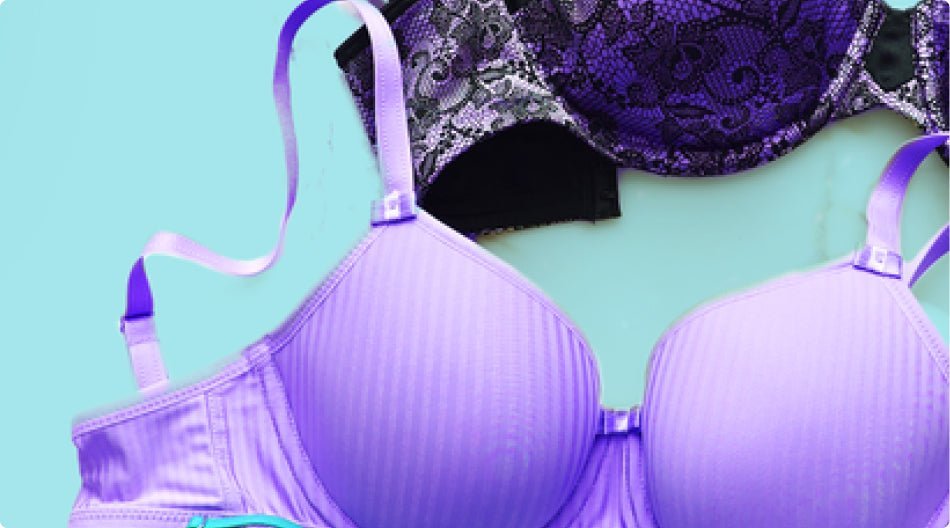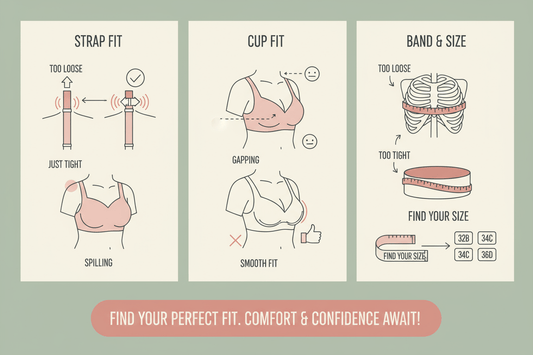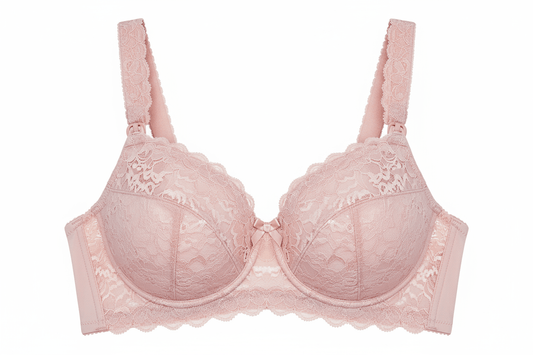Key Takeaways
Q: What should I look for in my first bra?
A: Prioritize comfort over style, choose soft-cup training bras or seamless bralettes, and ensure proper fit with adjustable straps and breathable fabric.
Q: When is the right time to get a first bra?
A: There's no perfect age—it depends on individual development, comfort needs, and personal readiness. Most begin between ages 9-14.
Q: How do I measure for the right bra size?
A: Measure your band size (around ribcage under bust) and bust size (fullest part of chest), then subtract band from bust measurement to determine cup size.
Important Pointers:
- Professional fittings help ensure accuracy
- Comfort should always come first
- Replace bras when they stretch out or lose support
- Different activities need different bra styles
- Proper care extends bra lifespan
Table of Contents
- Introduction: Understanding the First Bra Experience
- The Emotional Impact of Your First Bra
- How to Choose Your First Bra
- Do's and Don'ts for Your First Bra
- Best Bras for First-Timers
- Conclusion: Embracing Your Changing Body
- Frequently Asked Questions
Introduction: Understanding the First Bra Experience
My Unforgettable Day

Getting your first bra is more than just shopping—it's a memorable milestone that marks an important transition in your life.
We weren't the kind of family who talked about our bodies. Or any bodies for that matter. What would I say? What would she say? What if one of my brothers heard us? I couldn't bear to be teased about this. My brothers were good at teasing. One of their names for me was 'Moose.' This definitely had to be a private conversation. Dismissing the idea of talking to her, I went on with my young life. Being eleven was hard enough, without this new thing to worry about. Quietly I wondered if wearing a bra would make me feel different about myself. No, I couldn't see how it could make me feel different. After all, it was just a bra.
Still, this gnawed at me. I would have to talk to her soon. And then one day, I did it. I said the words. "Mom,…um, when can I get a bra?" There, it was out in the open. I just had to remember to breathe. She was quiet. Very quiet. So I waited. I thought she'd get back to me on this subject soon. After all, I was her first daughter and this was important stuff, right? But nothing was said. Day one, day two, and on it went.
A few days later my family was excited because our cousin Pattie was coming over. We loved being with Uncle Steve, Aunt Toby, and Pattie. Pattie was about five years older than me. She shared things with us that we found so interesting. Pattie showed us how to do the latest dances. The twist, the pony; I loved the pony. But best of all, Pattie listened. Sometimes Pattie would barely be in the front door when my siblings and I descended on her, hardly taking a breath.
This story isn't just about a bra—it's about finding the courage to speak up about your changing body, even when it feels scary. The emotional and physical journey of a young person getting their first bra involves navigating uncertainty, awkward conversations, body changes, and finding confidence. Whether you're a parent helping your child through this transition or someone preparing for this milestone yourself, understanding the process makes it easier and more empowering.

The Emotional Impact of Your First Bra
Why Is Getting Your First Bra Such a Big Deal?
Your first bra represents physical growth and emotional maturity, marking a significant step toward adulthood.
This milestone carries weight beyond the garment itself. For many, it's the first tangible sign that your body is changing and developing. You might feel excited, nervous, self-conscious, or all of these emotions at once—and that's completely normal. Some feel proud of this new stage, while others worry about how it changes how they see themselves or how others see them. The first bra can impact your confidence and body image in powerful ways, which is why choosing comfortable bras that make you feel good matters so much.
Understanding different breast shapes and how bodies develop helps you realize that everyone's journey is unique. There's no "right" timeline or "normal" experience. Your first bra should celebrate your individual growth, not conform to anyone else's expectations.
How Does Wearing a Bra Affect Your Confidence?
The right bra provides physical comfort and emotional reassurance, helping you feel more confident in your changing body.
When you find comfortable bras that fit properly, they offer support without drawing unwanted attention. The most comfortable bras become invisible—you forget you're wearing them while they provide the coverage and support you need. This comfort translates directly to confidence. You can move freely, participate in activities, and focus on being yourself rather than worrying about adjustments or discomfort. A comfort bra designed for first-timers prioritizes soft fabrics, gentle support, and easy wearability, allowing you to embrace this change positively.
How to Choose Your First Bra? A Guide for First-Timers
What Bra Styles Work Best for Beginners?
Soft-cup training bras, wireless bralettes, and simple sports bras offer the best combination of comfort and gentle support for first-time wearers.
Starting with simpler styles helps you adjust to wearing a bra without feeling overwhelmed. Soft-cup training bras provide light coverage and support without underwires or heavy structure. Seamless bralettes offer a comfortable, flexible fit that moves with your body. Underwire sports bras typically aren't necessary for beginners—save these for later when you need more structured support for high-impact activities. T-shirt bras with smooth cups work well under clothing, creating a seamless look without added bulk.
Each style serves different purposes: training bras for everyday wear, sports bras for physical activity, and bralettes for relaxed comfort at home. Having variety lets you match your bra to your activities and comfort needs.
How Do You Measure for a Bra Size at Home?
To measure for bra size, use a soft measuring tape to measure your band size (under bust) and bust size (fullest part), then calculate the difference for your cup size.
Start by wearing a non-padded bra or going braless. For your band size, measure snugly around your ribcage directly under your bust—round to the nearest even number. Next, measure around the fullest part of your chest, keeping the tape parallel to the ground. Subtract your band measurement from your bust measurement. Each inch of difference represents a cup size (1 inch = A cup, 2 inches = B cup, and so on).
Many first-timers benefit from the american bra size chart to understand sizing standards. However, sizes vary between brands, so don't worry if you need different sizes in different styles. A professional fitting at a lingerie store provides expert guidance on how to measure for a bra accurately, ensuring you start with the right fit. Remember, proper fit means the band sits level around your body, cups contain all breast tissue without spillage or gaps, and straps stay in place without digging into shoulders.

Do's and Don'ts for Your First Bra
What Should You Always Do?
Prioritize comfort, get proper sizing help, maintain your bras correctly, and own multiple styles for different needs.
Do's for First-Time Bra Wearers:
- Choose comfort over style initially - Function matters more than fashion when you're adjusting to wearing a bra. The most comfortable bras use soft, breathable fabrics that feel gentle against skin.
- Get a professional fitting if possible - Experts can teach you how to measure for bra size correctly and identify the best styles for your breast shape. This prevents frustration from buying the wrong size.
- Wash your bras properly - Hand wash or use a lingerie bag in cold water, then air dry. This maintains elasticity and shape much longer than machine washing and drying.
- Have different styles for various activities - Your everyday comfort bra differs from your sports bra. Having options ensures appropriate support for every situation.
What Mistakes Should You Avoid?
Never wear bras that don't fit properly, sleep in underwire bras, assume all brands size identically, or keep wearing stretched-out bras.
Don'ts for First-Time Bra Wearers:
- Don't wear bras that are too tight or too loose - Too-tight bands restrict breathing and cause back bulge; too-loose bands provide no support and ride up constantly.
- Don't sleep in a wired bra - Underwires can press uncomfortably during sleep. Choose a soft comfort bra or skip the bra entirely for sleeping.
- Don't assume one size fits all - The average american bra size varies widely, and your size may differ across brands. Always try before buying when possible.
- Don't forget to replace worn-out bras - When bands stretch out, straps lose elasticity, or cups lose shape, it's time for replacements. Typically, bras last 6-12 months with regular wear.
Best Bras for First-Timers
Which Specific Bra Types Should Beginners Consider?
Start with soft-cup training bras, seamless bralettes, simple t-shirt bras, and comfortable sports bras that prioritize gentle support and easy wearability.
Top Bra Options for First-Time Wearers:
- Soft-Cup Training Bras: These provide light, wireless support perfect for initial development. Made with stretchy, breathable cotton blends, they offer comfortable coverage without structure or padding. Training bras help you adjust to wearing a bra without feeling restricted.
- Seamless Bralettes: Ultra-soft and wireless, bralettes offer flexible fit and minimal structure. They're ideal for lounging at home or wearing under casual clothing. Many first-timers love bralettes because they feel almost like not wearing a bra at all.
- Simple T-Shirt Bras: These feature smooth, molded cups that create a seamless look under clothing without visible lines or texture. T-shirt bras with gentle padding provide modest shaping while maintaining comfort for all-day wear.
- Comfortable Sports Bras: Essential for physical activities, sports bras offer compression support that minimizes movement during exercise. Choose styles with moisture-wicking fabric and wide, cushioned straps for maximum comfort during active moments.
A side support bra becomes useful as you need more structured support, but beginners should start with these foundational styles. Magic Bra offers collections specifically designed for first-timers, combining boutique quality with accessible pricing—because your first bra experience should feel special, not stressful.
Conclusion: The Final Step: Embracing Your Changing Body
Choosing your first bra marks an important journey from uncertainty to confidence, celebrating your body's natural development.
Looking back at that uncertain eleven-year-old who couldn't imagine how a bra could make her feel different, I now understand that it wasn't really about the bra at all. It was about accepting change, finding confidence in my developing body, and realizing that growing up happens whether we're ready or not. Your first bra represents more than fabric and elastic—it's a tool that supports you physically and emotionally as you navigate this transition.
Remember, there's no rush and no perfect way to experience this milestone. Focus on finding comfortable bras that make you feel good, prioritize proper fit over fashion trends, and embrace your unique breast shape and development timeline. Whether you choose soft-cup training bras for gentle support or comfortable sports bras for active days, what matters most is how you feel wearing them.
Body positivity starts with self-care and making choices that honor your comfort and confidence. Take time to learn how to measure for a bra, understand what styles work best for your needs, and don't hesitate to ask for help. Your body is changing in beautiful ways, and finding the perfect first bra celebrates that growth. Explore Magic Bra's collection designed specifically for first-timers—because every woman deserves to feel supported, comfortable, and confident from day one.
Frequently Asked Questions
Q1: How do I know what bra size is right for me?
Measure your band size (under bust) and bust size (fullest part of chest), then subtract to find cup size. Professional fittings provide expert confirmation and help you understand how different styles fit your unique breast shape.
Q2: What type of bra should a first-timer wear?
Start with soft-cup training bras or seamless bralettes that prioritize comfort over structure. These wireless options provide gentle support while you adjust to wearing a bra, making the transition easier and more comfortable.





